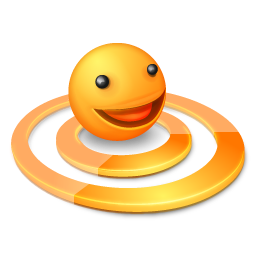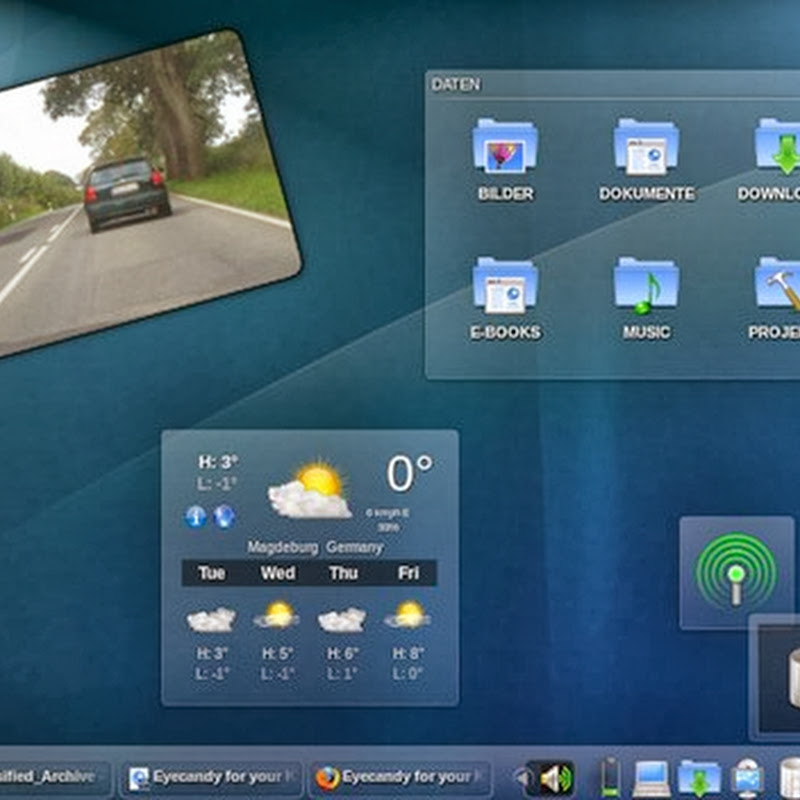 Dropline GNOME is a version of the GNOME desktop environment intended for use in the Slackware Linux distribution. As Slackware has not included GNOME since 2005, Dropline GNOME is an option for Slackware users who wish to use GNOME as their desktops.
Dropline GNOME is a version of the GNOME desktop environment intended for use in the Slackware Linux distribution. As Slackware has not included GNOME since 2005, Dropline GNOME is an option for Slackware users who wish to use GNOME as their desktops.Dropline GNOME 2.26.3 was released on August 8, 2009. The development team is working for the next release, the Gnome 2.28.
Due to developer constraints, the version of GNOME included with Slackware was inferior to that of many other distributions, and was later dropped entirely from the distribution [1]. Dropline GNOME was created to account for the shortcomings, and managed to fill the void left by this decision.
Todd Kulesza, Dropline GNOME's founder, has retired from further work on it. Dropline GNOME is now being maintained by a small group of volunteers from around the world who build different parts of the system.
Installation.

The primary (and preferred) method for installing Dropline GNOME is by using the Dropline installer—which is itself installed as a package. Once installed, the user then runs the dropline-installer, makes their package selections, and then the installer downloads and installs the rest of Dropline GNOME. The installer is similar in appearance to Slackware's pkgtools program, which is text-based and menu-driven. One may select which parts of Dropline GNOME one wishes to install and the installer will download the packages, verify them, and then install them. Rather than reinventing the wheel or risking contaminating the system package inventory, the installer invokes Slackware's normal upgradepkg utility to do the work of installing each package.
An alternative installation method is to use the Dropline GNOME CD ISO, which contains the installer package and all of the other binary packages that Dropline GNOME includes, alleviating the need for the individual packages to be downloaded from the Internet by the installer application. This greatly reduces the time of installation for dialup users and facilitates installation on machines with no network connection.
Release cycle.
Each minor (second version number) release of GNOME results in a new installer application and package group being released once things have been tested and polished to the package developers' satisfaction. However, subsequent micro (third version number, e.g. from 2.16.1 to 2.16.2) releases of GNOME are typically distributed in the form of individual package updates as source packages are updated, and do not require replacement of the installer package. To ensure that users do not easily fall behind in package updates, Dropline GNOME includes a panel applet to notify users when new packages for their installed release are available for download.

What comes with dropline GNOME?
- dropline GNOME features the latest stable release of GNOME and its associated components.
- Internet Applications
- Mozilla Firefox: The fastest full featured web browser on the planet.
- Mozilla Thunderbird: The email client from the Mozilla Foundation.
- Epiphany: A lightweight web browser for gnome, based on firefox.
- Drivel: A blogging tool with support for most blog services and software
- Gaim: An instant messenger supporting AIM, MSN, Yahoo, and just about everything else.
- Ekiga: For your videoconferencing and VoIP needs.
- Xchat: An IRC client. Be sure to check out freenode and #dropline
- Office Software
- The Gnome Office Suite: A set of lightweight office applications.
- OpenOffice.org Office Suite (optional).
- Evolution: A mail program including a calender, scheduling, and much more.
- Multimedia
- Totem: A full-featured media player with a web browser plugin.
- Rhythmbox: A library based music collection player.
- Graphics Viewers/Editors
- Evince: An advanced PDF/PS viewer.
- Gthumb: An image collection viewer that supports numerous digital cameras.
- The Gimp: Also known as the GNU Image Manipulation Program, your image and photo editor.
- Inkscape: A powerful vector image (SVG) editor.
- Miscellaneous
- Accessibility programs including a screen magnifier, an on-screen keyboard, and the advanced Dasher input system.
- The Dropline Installer: keeps your Dropline system up-to-date.
- Games: All standard Gnome games like Mahjongg and AisleRiot are included.
- GnomeBaker: A CD/DVD burning application.
- Seahorse: The GnuPG encryption key manager.
Screenshots.








0 commenti:
Post a Comment